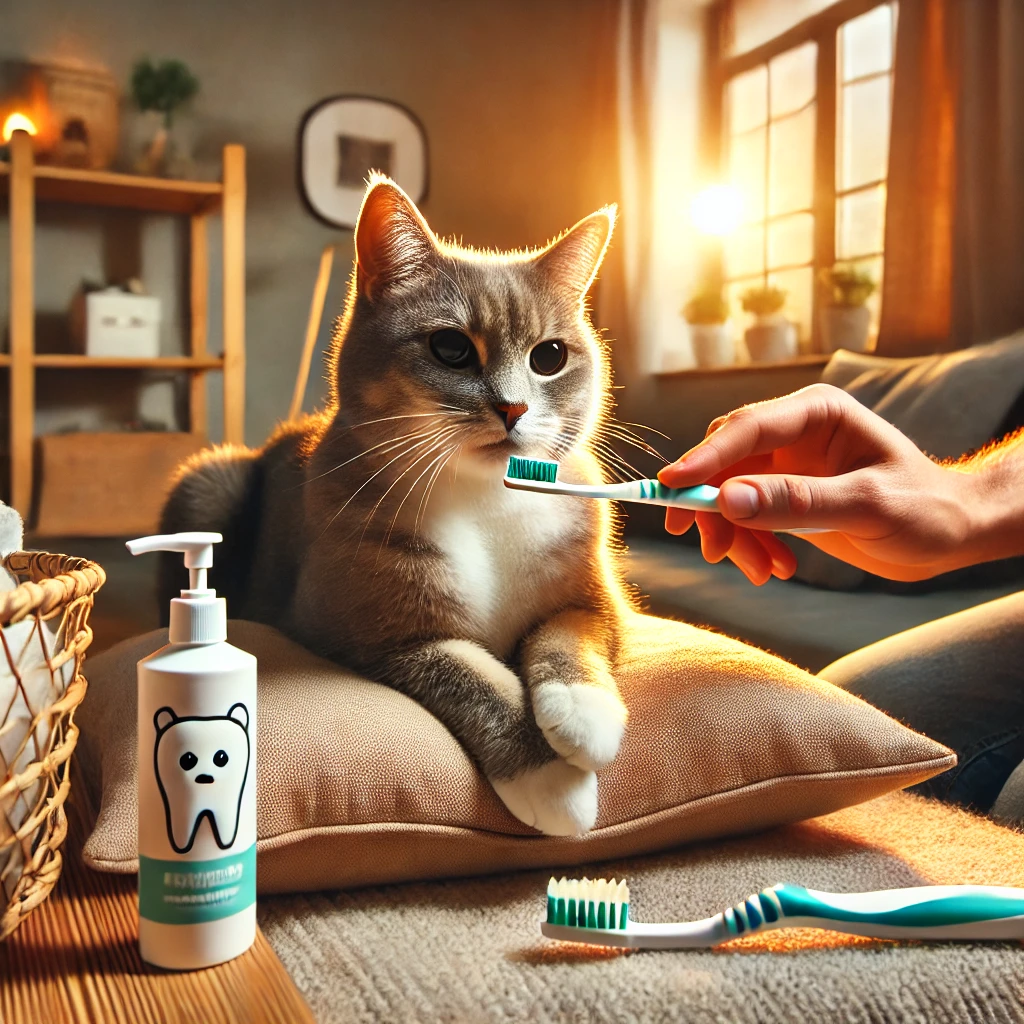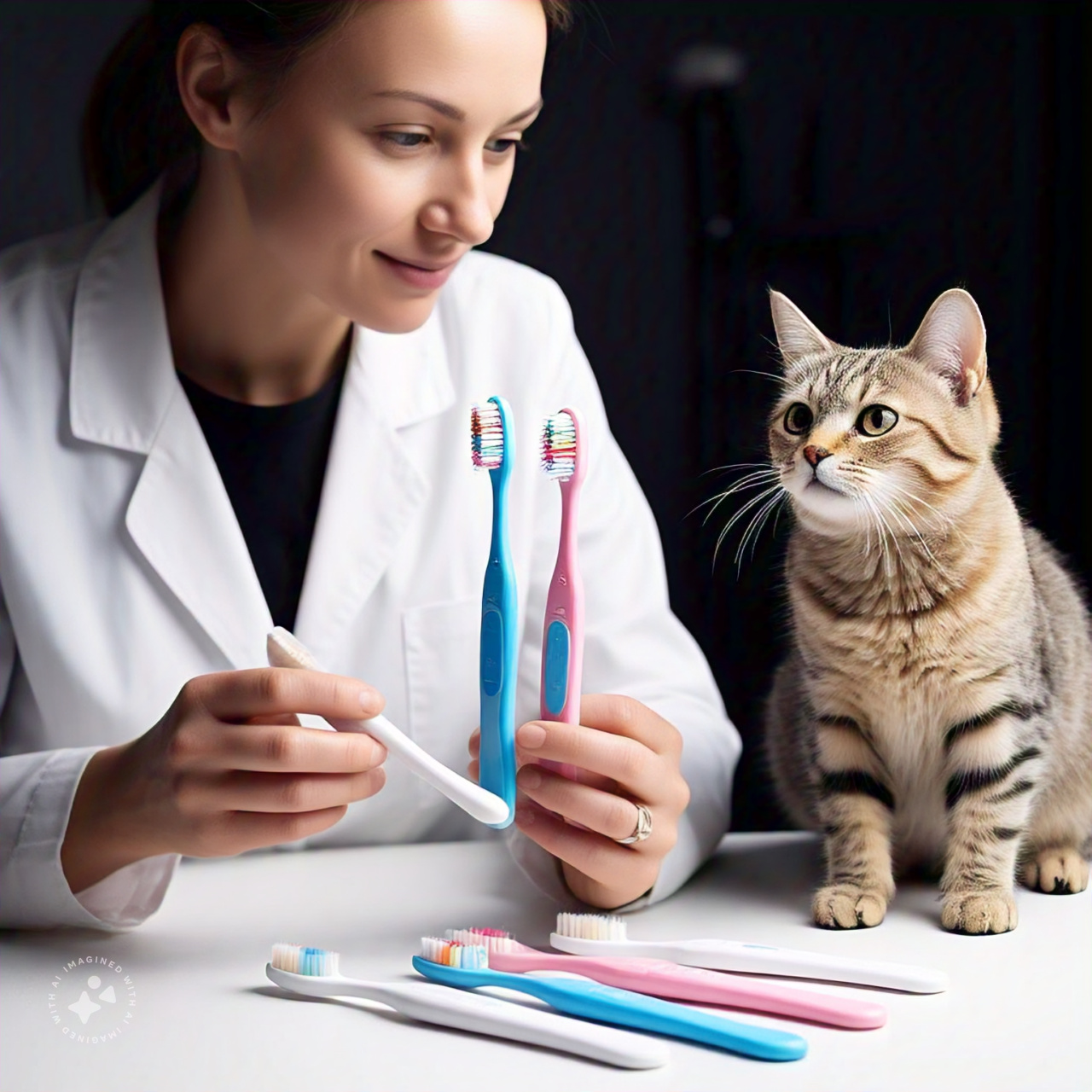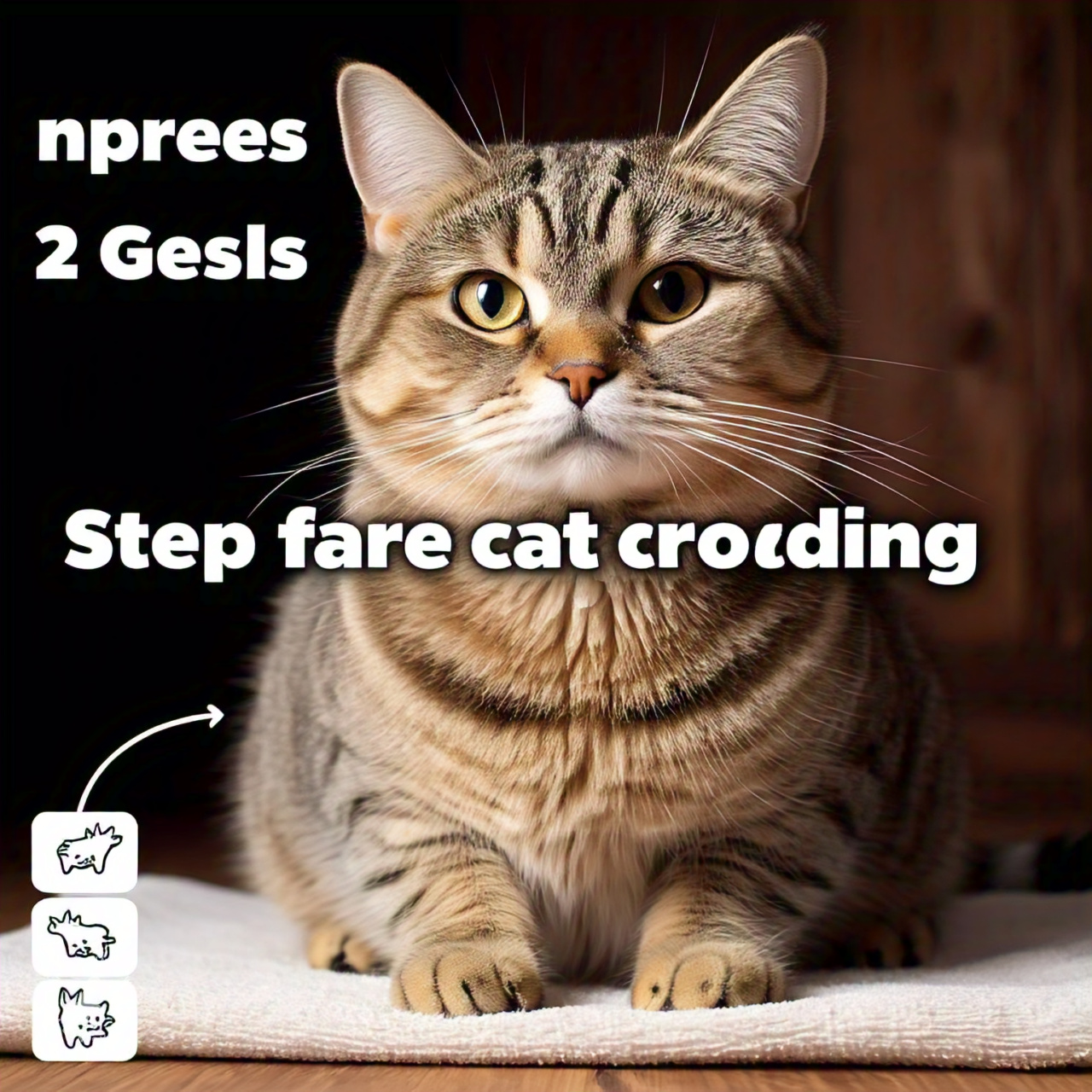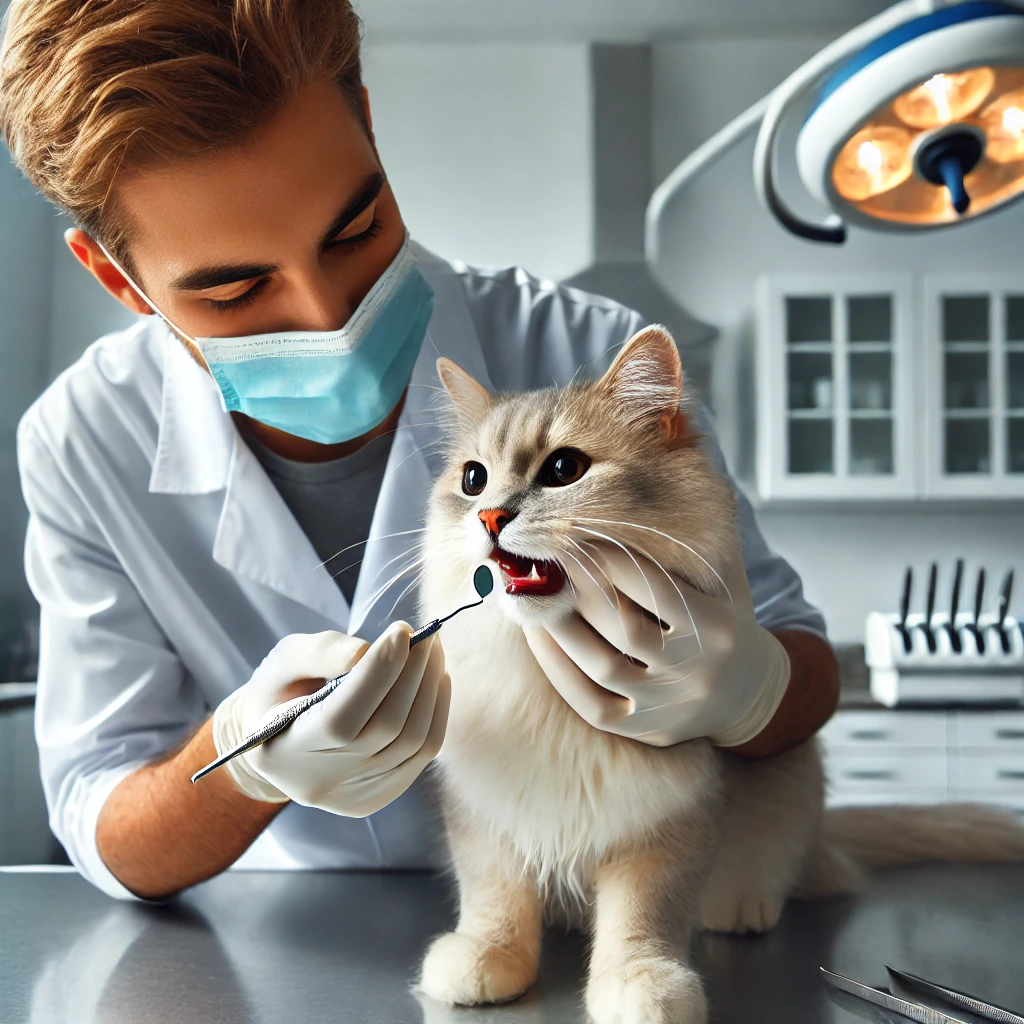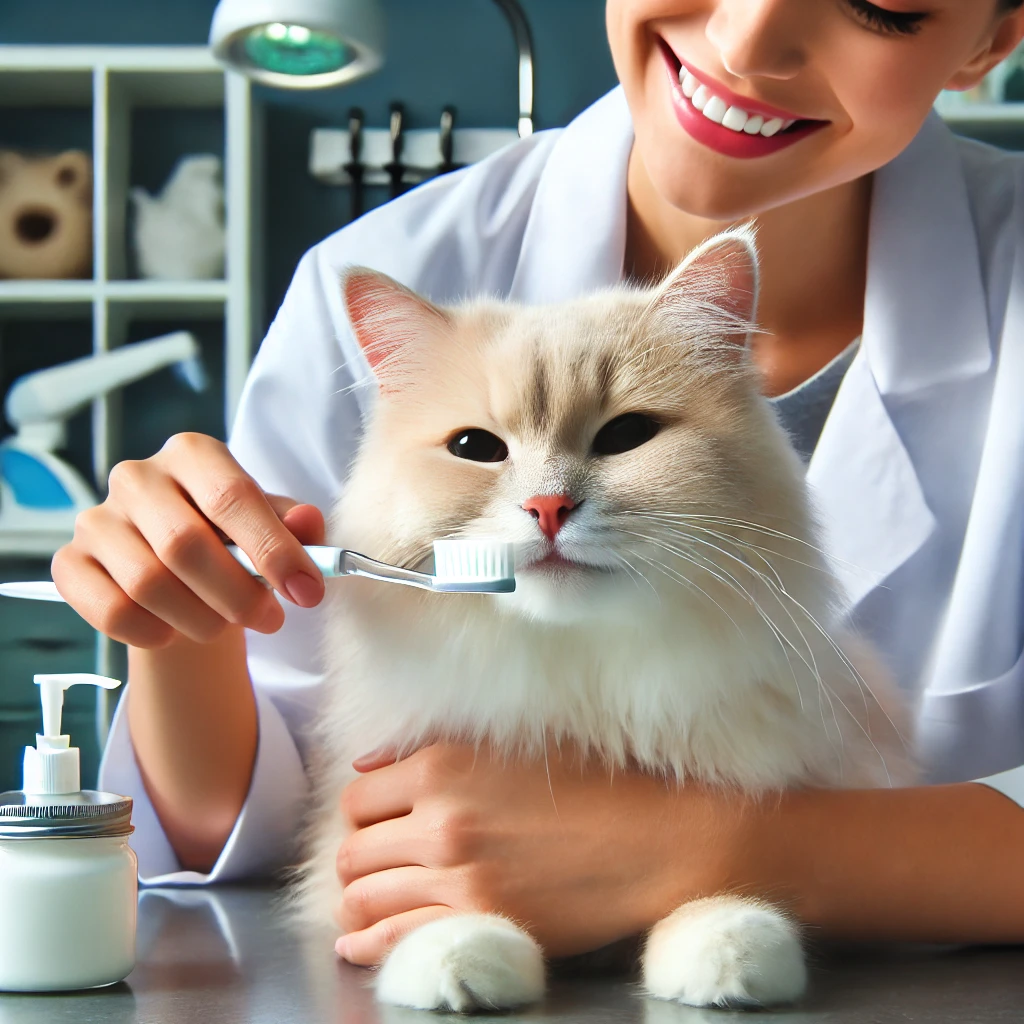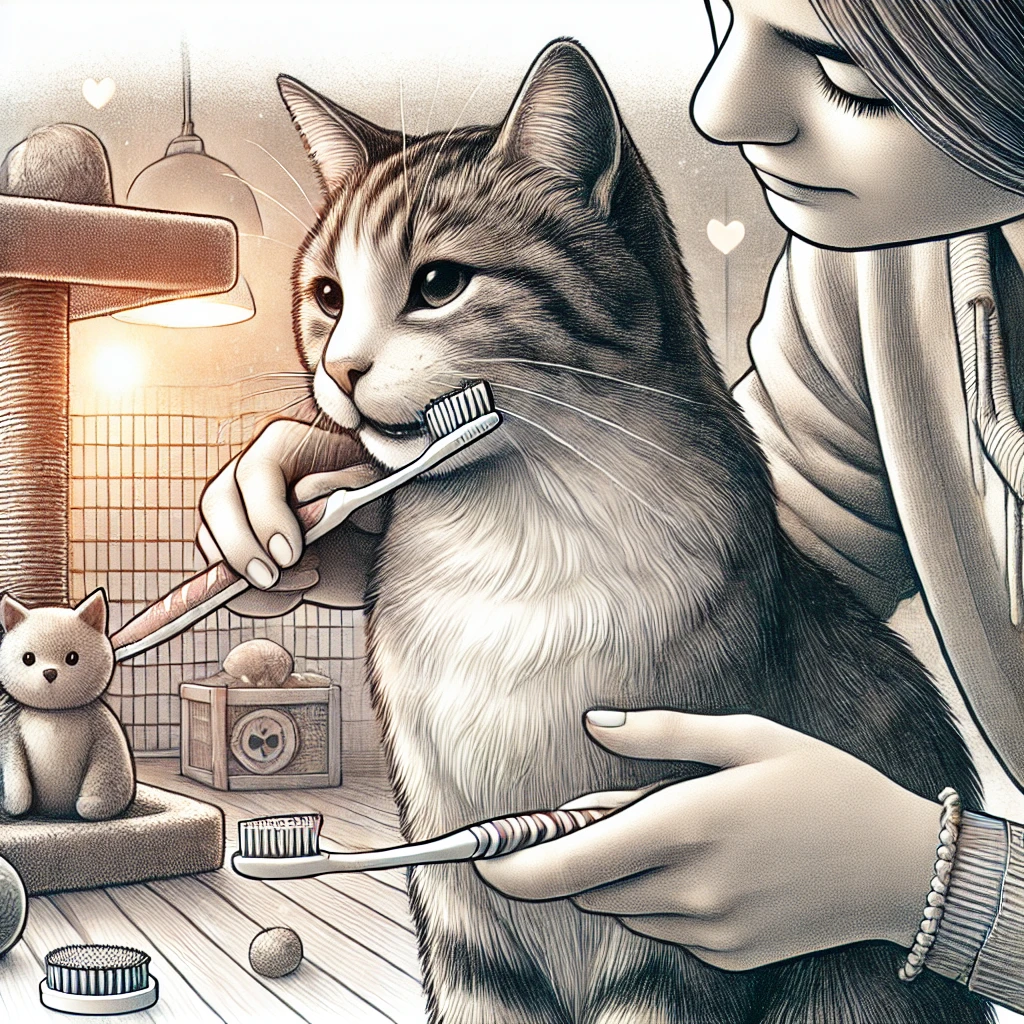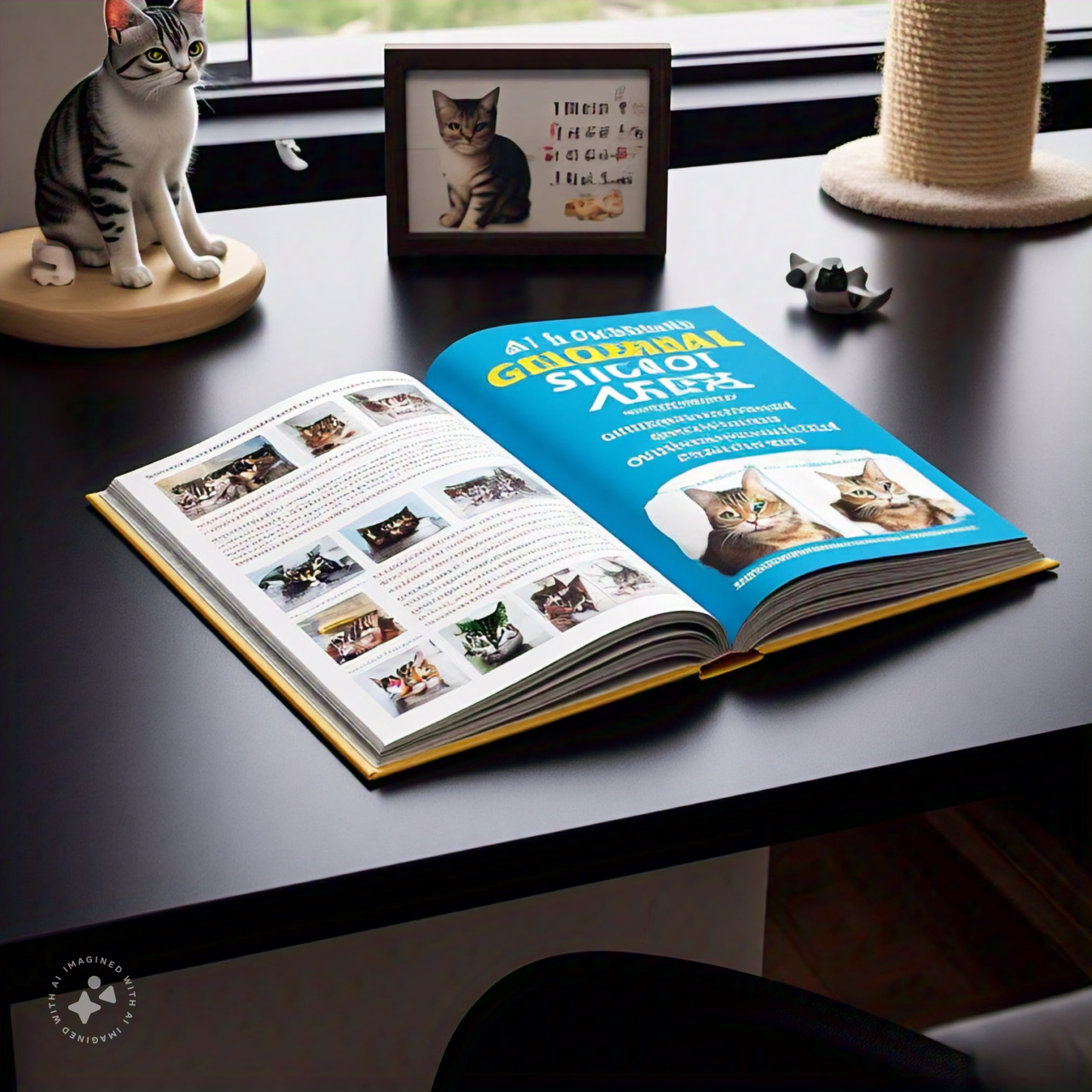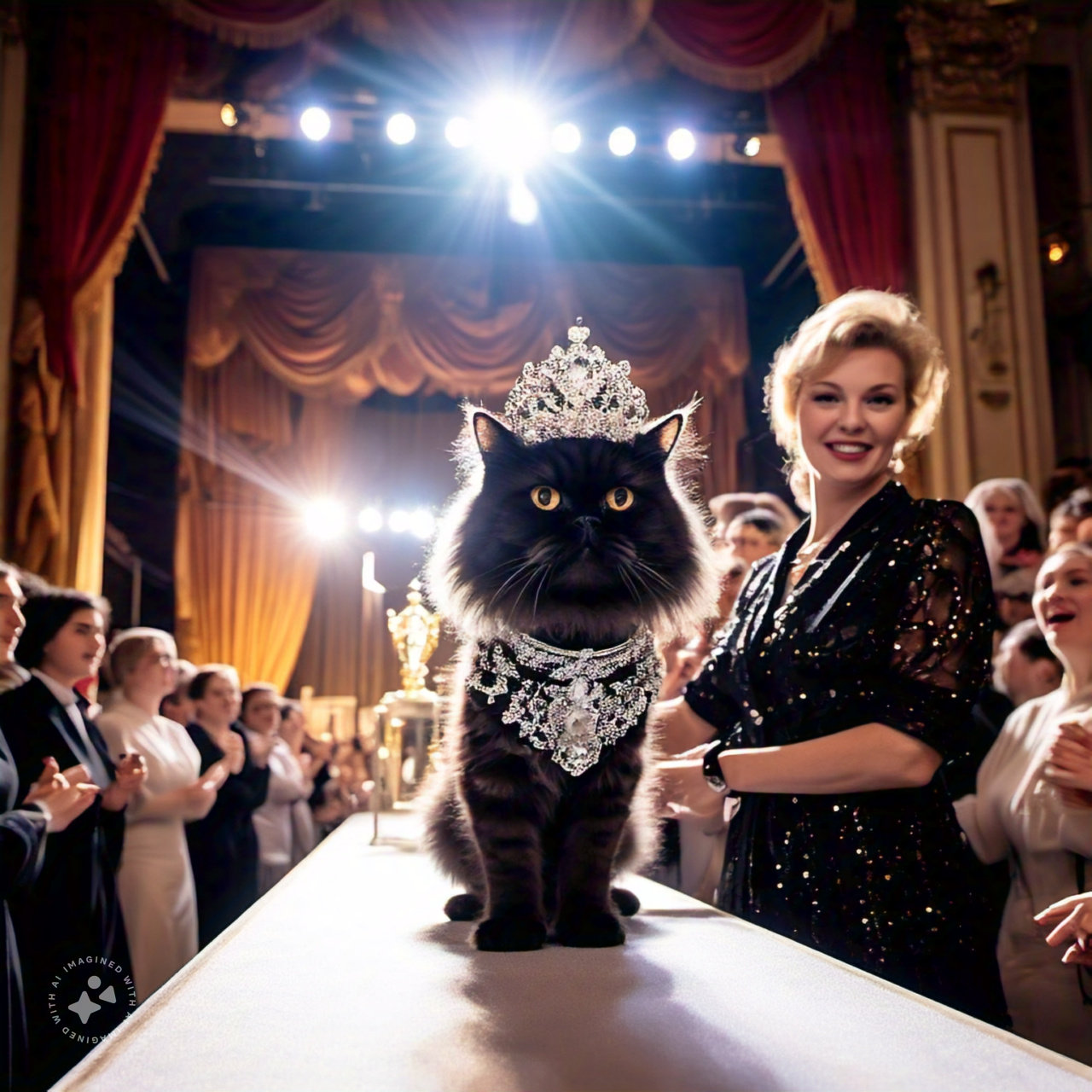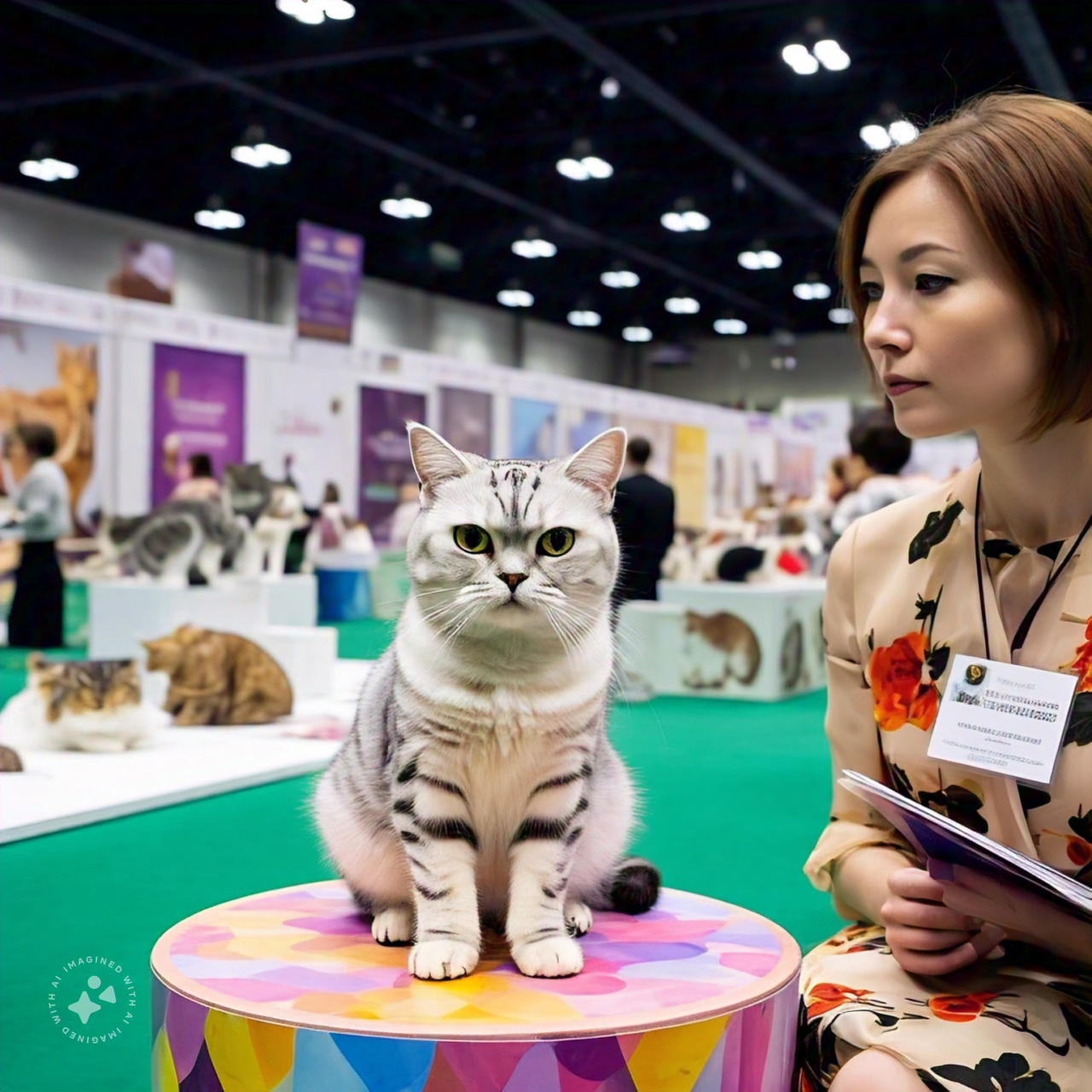Understanding the Importance of Dental Health for Cats
Dental health is a critical aspect of a cat’s overall well-being. Many cat owners often overlook the significance of regular dental care, but just like humans, cats need proper oral hygiene to maintain a healthy life. Understanding the role of dental care and debunking the myths surrounding it can help cat owners provide the best possible care for their furry companions. This article addresses some of the most common misconceptions about brushing your cat’s teeth and aims to provide clarity on the subject.
The Role of Dental Hygiene in a Cat’s Health
Dental health goes far beyond preventing bad breath. In fact, poor dental hygiene in cats can lead to serious health problems. Cats are susceptible to a range of dental conditions, including periodontal disease, gingivitis, and tooth decay. These conditions can cause pain, discomfort, and even lead to tooth loss if left untreated. More concerning, poor oral hygiene can contribute to systemic issues, affecting the cat’s heart, kidneys, and liver.
Regular brushing can prevent plaque and tartar buildup, which are the leading causes of dental diseases. Just like humans, cats can accumulate bacteria in their mouths, and if left unchecked, this bacteria can lead to infections and inflammation. Therefore, brushing a cat’s teeth is not merely about keeping their breath fresh but about ensuring they live a longer, healthier life.
Despite the importance of dental care, many cat owners are misinformed about the process and the benefits of regular teeth brushing. Myths about the ease and necessity of brushing a cat’s teeth often discourage cat owners from incorporating this routine into their pet care regimen. This article will address the most common myths surrounding the practice of brushing cats’ teeth and provide clarity to help pet owners understand why it’s important to make this a regular part of their cat’s healthcare routine.
Myth #1: Brushing a Cat’s Teeth Is Too Difficult
One of the most common misconceptions about brushing a cat’s teeth is that it is too difficult to accomplish. Many cat owners assume that their pet will resist the process so fiercely that it is not worth trying. However, while it’s true that cats can be finicky and often don’t enjoy having their teeth brushed initially, it is not impossible to train them.
The key is to start slow and make the experience as comfortable as possible. Begin by introducing your cat to the toothpaste and toothbrush gradually. Allow them to sniff and lick the toothpaste before actually applying it to their teeth. Use a soft-bristled toothbrush specifically designed for cats, as it will be gentler on their gums and teeth. Starting with short, gentle sessions and gradually increasing the time spent brushing will help your cat get accustomed to the process.
It’s also important to recognize that not all cats will immediately accept having their teeth brushed. Some cats may take more time to adjust than others. Patience and positive reinforcement are critical when training a cat to accept tooth brushing. This myth that brushing a cat’s teeth is too difficult to manage stems from impatience and unrealistic expectations. With consistent effort and the right approach, most cats can learn to tolerate or even enjoy the brushing process.
Myth #2: Only Older Cats Need Their Teeth Brushed
Another common myth is that only older cats need their teeth brushed. Many cat owners assume that kittens, especially those under one year old, don’t require dental care because their baby teeth are still in place. However, dental issues can arise in cats of any age, including kittens and young adults. In fact, early intervention can help prevent future dental problems and set the foundation for a lifetime of healthy teeth.
Kittens are just as susceptible to dental problems as adult cats. They may experience plaque buildup, tartar formation, and gum irritation just like their older counterparts. Introducing a dental care routine during kittenhood can help prevent these issues and encourage lifelong dental health. Regular brushing from a young age can also make the process easier for both the cat and the owner, as the cat will become accustomed to having their teeth touched and cleaned.
Brushing a kitten’s teeth also allows the pet owner to establish good habits early on. By starting a dental care routine during kittenhood, owners are likely to experience fewer problems with their cat’s teeth in the future. It’s important to note that even though kittens may not have full sets of adult teeth, they still need proper care to maintain healthy oral hygiene. Therefore, it’s never too early to start brushing your cat’s teeth, and owners should not delay this essential part of feline healthcare.
Myth #3: Cats Can’t Get Cavities Like Humans Do
Some cat owners believe that cats cannot get cavities, which is another dangerous misconception. While the structure of a cat’s teeth differs slightly from that of humans, cats are still susceptible to cavities and other forms of tooth decay. Plaque and tartar can build up on a cat’s teeth over time, leading to the breakdown of the enamel and the development of cavities. If untreated, cavities can become infected, leading to painful abscesses, tooth loss, and other serious health problems.
Cats’ teeth are made of enamel, just like human teeth, and they can suffer from the same types of issues. Additionally, certain breeds of cats are more prone to dental issues than others. For example, Persian cats and Siamese cats are known to have more frequent dental problems due to their genetics. Regular brushing is the most effective way to prevent cavities and other dental issues in cats.
It’s essential for cat owners to realize that dental health is not something that can be taken for granted. Cats can experience oral decay and disease, and it’s crucial for their owners to stay vigilant about brushing their teeth regularly. Proper dental care will not only protect a cat from cavities but also contribute to better overall health and well-being.
Myth #4: Brushing Is the Only Way to Maintain Oral Health in Cats
While brushing is one of the most effective ways to maintain a cat’s oral health, it is not the only method available. Many owners assume that brushing is the only solution for their cat’s dental care, but there are other ways to promote good oral hygiene. Dental treats, water additives, and dental diets are also effective in supporting a cat’s dental health.
Dental treats, for example, are designed to help reduce plaque buildup as the cat chews. Some treats are formulated to scrub the teeth and massage the gums, offering an alternative or supplement to brushing. Similarly, certain water additives can help break down plaque and tartar while freshening the cat’s breath. Dental diets, formulated with special kibble shapes or ingredients, can also aid in maintaining dental hygiene by encouraging chewing and reducing plaque formation.
However, it’s important to remember that these alternatives should not replace brushing entirely. They should be used in conjunction with a regular brushing routine to achieve optimal dental health. While these methods are helpful, brushing remains the most direct and effective way to ensure that your cat’s teeth remain healthy and free from disease. Combining different methods can offer a more comprehensive approach to your cat’s dental care.
Dispelling More Myths About Brushing Your Cat’s Teeth
As more people become aware of the importance of dental care for their pets, many cat owners are still influenced by misconceptions that hinder their ability to effectively care for their cat’s teeth. These myths may not only prevent pet owners from taking proper action, but they can also put their cats at risk of developing serious dental issues. In this part of the article, we will continue addressing some of the most common myths surrounding feline dental care, and offer solutions to ensure a healthier mouth for your cat.
Myth #5: Brushing Cats’ Teeth Isn’t Necessary If They Eat Dry Food
Many pet owners believe that feeding their cats dry food eliminates the need for brushing their teeth. This myth suggests that dry kibble helps clean the cat’s teeth as they chew, thereby preventing plaque buildup and promoting healthy gums. However, this idea is far from the truth. While dry food may provide some mechanical cleaning, it is not sufficient to maintain optimal dental health.
Dry food can help in the sense that it encourages chewing, which can dislodge small amounts of plaque. However, it does not completely prevent tartar buildup or remove the bacteria that can lead to periodontal disease. In fact, some dry foods can even contribute to plaque formation if the food is particularly starchy or sticky. Wet food, on the other hand, does not provide any mechanical cleaning, and may actually exacerbate dental issues due to its moisture content that can stick to teeth and gums.
To maintain a cat’s dental health, brushing is necessary. A well-established brushing routine will address the plaque and tartar that dry food alone cannot prevent. Cats need regular brushing to avoid the accumulation of plaque, which eventually hardens into tartar, requiring professional cleaning to remove. The myth that dry food alone is enough for your cat’s dental care may mislead owners into neglecting the importance of brushing.
Myth #6: If Your Cat’s Teeth Don’t Appear Dirty, They Are Healthy
Another prevalent myth is that a cat’s teeth are healthy as long as they don’t appear dirty or yellow. Many cat owners mistakenly assume that if there is no visible plaque or tartar, their cat’s teeth are in good condition. However, the absence of visible staining does not necessarily indicate healthy teeth.
Plaque can form even if it’s not immediately visible. It’s a soft, sticky film that builds up on the teeth and harbors bacteria. Over time, if not properly removed, plaque can harden into tartar, which may not be obvious to the naked eye. Cats may also experience internal dental issues, such as gum inflammation or infections, that are not visible without a professional examination. Gum disease, in particular, can begin beneath the surface and may not show outward signs until it has reached an advanced stage.
The only way to ensure that a cat’s teeth are truly healthy is by maintaining a consistent dental care routine. This includes brushing the cat’s teeth and taking them for regular veterinary check-ups. A veterinarian can identify any early signs of dental disease that might not be visible to the untrained eye. In addition, regular brushing can help prevent tartar buildup and ensure that the cat’s teeth remain in good health, even if they appear clean on the surface.
Myth #7: Cats Don’t Need Dental Check-ups
A common belief among cat owners is that dental check-ups are unnecessary as long as their cat’s teeth look fine. Many owners fail to recognize that professional dental exams are vital for detecting hidden dental problems. Just like humans, cats need routine dental check-ups to ensure their oral health is properly maintained.
A veterinary dental examination goes beyond what can be seen during a typical check-up. The veterinarian may use special tools to examine the cat’s teeth and gums more thoroughly, looking for early signs of gingivitis, periodontal disease, or even oral cancer. Many dental issues, such as broken teeth, infected gums, or abscesses, can be easily overlooked without proper dental tools or training.
Without professional dental care, small issues can become larger, more painful problems that may require expensive treatments or even tooth extractions. Regular dental check-ups help to identify these problems early, so they can be addressed before they escalate. Dental exams also provide an opportunity for the veterinarian to professionally clean the cat’s teeth, which is especially important if plaque and tartar have built up to a significant degree. This myth that cats don’t need professional dental care can put a cat’s health at risk, as it encourages owners to overlook the importance of veterinary dental exams.
Myth #8: Toothpaste for Humans Is Fine for Cats
When it comes to brushing a cat’s teeth, it’s essential to use the right type of toothpaste. Some cat owners, in an effort to save money or time, assume that human toothpaste is fine for their cats. However, this is a dangerous misconception. Human toothpaste contains ingredients like fluoride, xylitol, and other chemicals that are toxic to cats.
Fluoride, for example, is harmful if ingested by cats. Xylitol, a sugar substitute found in many types of human toothpaste, can be deadly to pets, causing hypoglycemia and potentially fatal liver failure. Even if a cat only swallows a small amount of toothpaste, the effects can be severe. That’s why it’s crucial to use toothpaste that is specifically formulated for cats.
Cat-friendly toothpaste is safe to swallow and contains ingredients that are non-toxic and effective for breaking down plaque and tartar. These toothpaste products are typically flavored with enticing tastes like poultry or fish, which makes the brushing experience more pleasant for your cat. Using toothpaste made for humans can lead to serious health issues, so it’s important for cat owners to use only products designed for feline use.
Myth #9: Brushing Only Needs to Be Done When Your Cat Is Older
Many people believe that a cat doesn’t need their teeth brushed until they are older, assuming that dental problems only occur with age. This myth is particularly harmful, as it encourages pet owners to neglect dental care during the cat’s younger years. As previously mentioned, dental issues can develop at any age, even in kittens and young adult cats.
Brushing a kitten’s teeth early in life establishes good oral hygiene habits and can reduce the likelihood of developing severe dental problems as they grow older. The earlier a cat gets used to regular brushing, the easier it will be to maintain a healthy mouth throughout their life. Delaying tooth brushing until later in life can make it more difficult for the cat to tolerate the process, and by then, they may have already developed dental issues that require professional intervention.
Additionally, preventative dental care can save money and reduce the stress of treating advanced dental problems. By starting early, cat owners can avoid costly procedures like teeth cleanings or extractions that might become necessary if proper care isn’t taken from the beginning.
Myth #10: Natural Chews and Treats Can Replace Brushing
Some cat owners turn to natural chews or dental treats as a replacement for brushing, believing that these items can do the same job of cleaning their cat’s teeth. While some chews and treats may help reduce plaque, they cannot replace the thorough cleaning that brushing provides. Brushing removes plaque directly from the surface of the teeth, while chews may only offer a secondary benefit.
Even the best dental treats cannot reach every part of a cat’s mouth. Brushing ensures that all areas of the teeth, including the hard-to-reach back molars, are cleaned effectively. Relying solely on treats may leave plaque buildup in areas that are not adequately cleaned. Additionally, some natural chews, while beneficial, may be too hard and could potentially damage a cat’s teeth or lead to broken teeth if not used properly.
The best approach to maintaining your cat’s dental health is to combine brushing with other dental care options like chews and treats. This comprehensive approach will provide the most effective results in preventing dental disease.
Continuing to Break Down Common Misconceptions About Cat Dental Care
By now, it is clear that taking care of a cat’s teeth goes far beyond simply feeding them a certain type of food or assuming that their teeth are fine because they don’t show visible signs of trouble. Many cat owners are unknowingly misinformed about what it really takes to maintain healthy teeth and gums for their pets. In this section, we will continue to explore even more myths surrounding the practice of brushing a cat’s teeth, and we will provide evidence-based information that highlights why these myths are harmful and inaccurate.
Myth #11: Brushing Your Cat’s Teeth Is Too Difficult
Many cat owners avoid brushing their cat’s teeth because they assume that the process is difficult, frustrating, or downright impossible. The idea of trying to brush a cat’s teeth may seem daunting, especially for first-time cat owners or those who have never brushed a cat’s teeth before. However, with the right techniques and tools, brushing a cat’s teeth can be an easy and relatively stress-free process.
The key to success is to start slow and make the experience positive for your cat. It is important to ease your cat into the routine by gently handling their mouth and teeth at a young age, if possible. For adult cats that are not accustomed to having their teeth brushed, it may take some time to get them used to the process, but patience and consistency will lead to a successful routine. Begin by offering treats and praise after each brushing session, which will help your cat associate the activity with positive outcomes.
Additionally, there are a variety of cat-friendly toothbrushes and toothpaste available that are specifically designed for the task. Some cats may tolerate a finger brush, which slips over the finger and allows for a gentler cleaning experience. Others may prefer a more traditional toothbrush with soft bristles. Using the right tools can make the process less stressful for both the cat and the owner.
Though it may seem like a daunting task at first, brushing a cat’s teeth is not as difficult as it appears, and it becomes easier with practice. Over time, it can become a quick and simple part of the cat’s grooming routine.
Myth #12: Cats Don’t Have Dental Problems Until They’re Old
A widespread myth is that cats don’t experience dental issues until they are older. This myth leads to the belief that cats can go without dental care until they reach their senior years. However, dental problems can begin at any stage of a cat’s life, even as early as kittenhood.
It is possible for a cat to develop dental issues such as gum disease, tooth resorption, and tartar buildup at a young age, particularly if they do not receive proper care. Regular dental check-ups and cleaning are important starting early, even for kittens. Cats that are not accustomed to brushing may experience difficulties with plaque buildup, which over time can progress to periodontal disease.
It’s important for pet owners to understand that dental disease in cats can be sneaky and may not exhibit obvious symptoms at first. Early stages of gingivitis or other gum conditions are often painless and may not be noticeable. As such, it’s important for owners to practice preventive dental care from the time their cat is a kitten or young adult, ensuring that their cat’s teeth and gums are protected from future problems.
Dental problems are not age-specific and should be addressed early to prevent unnecessary complications later in life. Taking a proactive approach to dental care now can significantly reduce the risks of your cat developing serious dental diseases in the future.
Myth #13: Cats Don’t Like Having Their Teeth Brushed, So It’s Better Not to Try
Many cat owners believe that their cats won’t tolerate having their teeth brushed, and they choose not to try because they assume their cats will be unhappy with the process. While some cats may initially resist brushing, the notion that all cats will hate it is not necessarily true. It is possible to train a cat to accept tooth brushing, and some cats may even learn to enjoy the attention and bonding that occurs during brushing sessions.
The process of training a cat to accept teeth brushing requires patience and consistency. For cats that are hesitant or fearful of having their mouths handled, it’s important to introduce brushing gradually. Start by using your finger to gently rub their gums, and then slowly transition to using a toothbrush. Initially, you may only brush for a few seconds at a time, working up to longer sessions as your cat becomes accustomed to the routine.
For some cats, it may take several attempts before they feel comfortable with the process, and that’s okay. Don’t be discouraged if your cat initially resists. Many cats, once they become familiar with the experience, will learn to tolerate it and may even look forward to it as part of their regular grooming routine.
In cases where a cat is particularly resistant to brushing, there are alternative options to help manage their dental health, such as dental wipes or enzymatic sprays. However, brushing remains the most effective method for maintaining your cat’s oral health. It’s important to approach the situation with patience and understanding, as dental care is an essential part of a cat’s overall well-being.
Myth #14: Only Cats with Visible Problems Need Professional Cleanings
Another myth is that only cats with visible signs of dental problems, such as bad breath, loose teeth, or bleeding gums, need professional cleanings. While it is true that these signs often indicate advanced dental issues, waiting until problems become visible is not the best approach to managing your cat’s oral health. Cats can develop dental issues beneath the surface, and early detection is key to preventing more severe problems down the road.
Routine professional dental cleanings, even in the absence of visible symptoms, are essential for maintaining your cat’s oral health. A veterinarian can perform an in-depth examination of the teeth and gums, identifying any underlying issues that may not be immediately noticeable. Professional cleanings involve scaling the teeth to remove tartar and plaque, which can help prevent the development of gingivitis or more serious periodontal disease.
By opting for preventive dental cleanings, you can ensure that your cat’s teeth are thoroughly cleaned, and that any issues are caught early before they become more serious. Just because your cat’s teeth appear healthy doesn’t mean they are free from dental problems. A regular dental check-up with a professional will provide peace of mind and help you maintain the best possible oral health for your cat.
Myth #15: You Can Only Use Dental Care Products on Cats That Have Already Had Dental Issues
There is a myth that dental care products, such as toothpaste or oral rinses, should only be used after a cat has experienced dental problems. This myth can lead to poor dental hygiene practices, as it discourages pet owners from using preventive care products when they are most needed.
In fact, dental care products should be used as a preventive measure, long before dental issues arise. The use of dental products such as toothpaste, water additives, and oral gels can help to keep plaque and tartar at bay, reducing the chances of periodontal disease developing in the first place. These products are not only for cats that already have dental problems, but for all cats as part of a proactive dental care routine.
Using dental products regularly can prevent the buildup of plaque and tartar that leads to more serious issues like gum disease and tooth decay. These products work best when incorporated into a consistent oral care routine, starting at a young age. Preventive care can be much more effective than attempting to address dental problems after they have developed.
Final Myths and Tips for Maintaining Optimal Cat Dental Health
As we wrap up our discussion on common myths about brushing your cat’s teeth, it’s important to focus on some additional misconceptions that continue to circulate in the world of pet care. By debunking these last few myths, we can emphasize the importance of a consistent, well-informed approach to dental hygiene for your cat. Moreover, this section will provide practical tips to help you maintain your cat’s oral health over the long term.
Myth #16: Cats Can’t Get Tooth Decay
One of the more perplexing myths in feline dental care is the belief that cats cannot develop tooth decay. This myth is misleading and dangerous, as it overlooks the potential for serious dental problems. While tooth decay is less common in cats compared to humans, it is not unheard of. Cats can develop cavities and experience damage to their teeth due to a variety of factors, including poor oral hygiene, diet, or certain medical conditions.
The primary cause of tooth decay in cats is the buildup of plaque and tartar, which can erode the enamel on their teeth and lead to cavities. If left untreated, this can progress to infections or tooth loss. This is why regular brushing and dental care are crucial for maintaining healthy teeth and gums in cats.
Additionally, certain breeds may be more prone to dental problems due to genetic factors. For example, Persian cats and other flat-faced breeds are often more susceptible to dental issues, making regular brushing and professional cleanings even more important.
To prevent tooth decay in cats, owners should prioritize regular oral care. By removing plaque through daily brushing and scheduling routine professional cleanings, you can significantly reduce the risk of your cat developing cavities or other dental problems.
Myth #17: Dry Food Is All You Need for Healthy Teeth
Another widespread myth is that feeding your cat dry food is sufficient for maintaining healthy teeth. This myth suggests that dry food, due to its crunchiness, naturally cleans a cat’s teeth and helps prevent plaque buildup. However, this belief is far from accurate and can lead to neglecting your cat’s dental needs.
While it is true that some dry food may have a slight abrasive effect on teeth, it is not nearly enough to effectively clean your cat’s teeth or prevent plaque and tartar buildup. In fact, many commercial dry cat foods contain carbohydrates and other ingredients that can contribute to the formation of plaque. Furthermore, many cats swallow dry kibble whole without chewing thoroughly, rendering any potential cleaning effect ineffective.
To ensure your cat’s dental health, it’s essential to incorporate proper dental care into their routine. Brushing your cat’s teeth remains the most effective way to prevent plaque buildup and gum disease. Wet food, though it may not have the same abrasive effect as dry food, can also be beneficial if chosen carefully. Many wet food options are designed to support dental health, and they can be used in conjunction with regular brushing to maintain optimal oral hygiene.
Ultimately, relying on dry food alone is insufficient for maintaining a cat’s oral health. A balanced diet, combined with regular brushing and dental checkups, is the best way to keep your cat’s teeth in top condition.
Myth #18: All Cats Need Dental Cleanings Under Anesthesia
One of the most significant concerns for cat owners is whether or not their cat will need to undergo anesthesia for professional dental cleanings. There is a misconception that all cats require anesthesia for cleanings, which can be a source of stress and anxiety for pet owners. However, while anesthesia is often necessary for comprehensive dental procedures, it is not always required for basic cleaning.
Professional dental cleanings typically involve scaling the teeth to remove tartar and plaque buildup. In many cases, this procedure is performed under general anesthesia, as it allows the veterinarian to thoroughly clean the teeth and examine the cat’s oral health without causing stress or discomfort. However, some cats may be able to undergo cleaning without anesthesia, especially if they have only minor buildup or if they are particularly healthy and well-behaved.
Your veterinarian will assess your cat’s oral health and determine whether anesthesia is necessary. In some cases, if a cat is cooperative and only requires minor cleaning, a non-anesthesia option may be available. However, for most cats, anesthesia provides the safest and most effective way to clean their teeth and thoroughly examine their oral health.
It’s essential to discuss your options with your vet and make an informed decision based on your cat’s needs. While anesthesia is a common and safe part of professional dental care, it’s not always the first step in every cleaning procedure.
Myth #19: Once You Start Brushing, You Must Brush Every Day
Another common myth about brushing your cat’s teeth is the belief that once you start, you must brush every day for it to be effective. While daily brushing is the ideal goal, it’s not always practical for every cat or owner. In reality, the frequency of brushing can vary depending on your cat’s needs, temperament, and overall dental health.
Brushing your cat’s teeth three to five times a week is often sufficient to keep plaque buildup under control and prevent major dental problems. If daily brushing is too much for your cat to handle, aim for a consistent routine that works for both of you. Some cats may eventually tolerate more frequent brushing, but it’s important to build up to it gradually.
If you’re unable to brush your cat’s teeth every day, you can also incorporate other dental care options such as dental treats, water additives, or oral gels. These products can help reduce plaque buildup between brushings and contribute to maintaining good oral hygiene.
Ultimately, the most important thing is to develop a routine that you can maintain, so your cat’s teeth are consistently cleaned and cared for. Even if daily brushing isn’t always feasible, any effort to maintain your cat’s oral health will be beneficial.
Myth #20: Bad Breath is Normal and Doesn’t Require Attention
A common myth that many cat owners believe is that bad breath (halitosis) is normal and doesn’t need to be addressed. However, bad breath is often a sign of underlying dental issues, such as gum disease, tartar buildup, or even more serious conditions like kidney disease or diabetes. It is never normal for a cat to have foul-smelling breath, and it should not be ignored.
If your cat has persistent bad breath, it’s a good idea to consult with a veterinarian to determine the cause. In most cases, bad breath is due to poor oral hygiene, and it can be treated with professional dental cleanings, a proper brushing routine, and a healthy diet. Addressing bad breath early can prevent more serious issues from developing, and it will also improve your cat’s overall well-being.
Conclusion
In conclusion, debunking these common myths about brushing your cat’s teeth is a crucial step toward ensuring your cat’s oral health. It’s clear that dental care for cats goes far beyond just feeding them the right food or hoping they won’t experience issues. Consistent brushing, regular check-ups, and a comprehensive understanding of your cat’s dental needs are the foundation of a healthy smile.
Maintaining your cat’s dental health requires dedication and patience, but the rewards are well worth the effort. By taking proactive steps today, you can help your cat avoid painful dental problems in the future, ensuring that they live a long, healthy life. Now that these myths have been debunked, cat owners are better equipped to care for their pet’s teeth, and they can confidently incorporate dental hygiene into their daily routines.
Oral health is an essential aspect of your cat’s overall well-being, and taking the necessary steps will pay off in the long run. Whether it’s brushing, professional cleanings, or simply understanding the truth behind dental myths, the more you learn, the better care you can provide.
